After graduating with a degree in Applied Arts and a specialization in child illustration from the UK, Kajal Gaba decided to dedicate her creative zest to create special happy spaces for small children. In her 23 years of dedicated service in the Indian educational field, she has been a major part of the process of how preschool education & educational spaces have evolved over the years. The unique customized ambiances created by her in over 200 + centers across the country which include preschools, nurseries, play areas, pediatric wards of major hospitals, Corporate daycare centers & child care cum development centers, Kajal has won various accolades & prestigious awards for her contribution. Her in-depth knowledge of the psychological effect of colors on the young minds and belief that designing for children is a science in itself, has got her many admirers from various leading national & international magazines who have been publishing her articles on her unique sense of selection of the color palette for young children
Learning extends beyond the curriculum to the very environment in which children learn. They influence development and learning results in multiple ways. Over the decades, the school education system of India has undergone a vast-change. When I look back at the progress, I reckon that though there has been a constant emphasis on the development of educational programs and curriculum, yet the environment in which these will be applied, has never been given much importance, until recently.
As a part of the evolving educational scenario in India, I have observed and learned a lot in my journey of over two decades of designing for children. I have always emphasized on the importance of design in child-centric spaces and the positive results of an environment design customized to integrate into the learning program.
Unfortunately, the significance of the positive impact of a well-designed learning or therapeutic environments is yet to get it’s due and is often an afterthought!
Children have a very creative imagination, yet a very myopic perspective and effective elements can work wonders in not only engaging them but also in retaining their attention span. Child development is only possible in a space that does not overpower the child and lets it take the lead with its versatility in design. Let the child be, we don’t need to teach a child how to play!
Children learn when they play. A child-safe environment that facilitates child-led play, sharpen their problem solving, social, motor and cognitive skills.
Let me briefly talk about the elements that form the soul of children spaces I design -, learning, play and therapeutic.
I call them the 5 Ps: PLAY, PERSPECTIVE, PROPORTION, PALETTE & PSYCHOLOGY
PLAY– Children look for play in everything. From an infant to an older child, play forms the best way to attract their attention. The attention span of children is very short and here the essence of child space design is put to test. Is the design engaging enough to extend a child’s attention span?
Play need not just be about tools and toys. Children interact with the environment around them through their senses. Sometimes these sensory experiences become the criteria for their association with these spaces.
Addressing all aspects of explorative play and sensory integration is a very important part of the customized designing of any child environment. Engaging elements with sensory diversity, juxtaposed in a changeable set up along with customized elements, all packaged within the parameters of child perspective and aesthetics are the ideal setting for child-led play and holistic development.
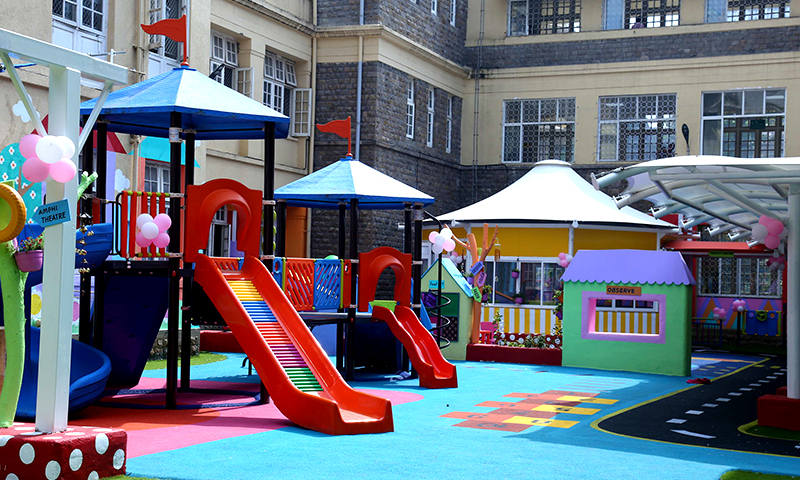
PERSPECTIVE– Go down on your knees and visualize the space from that 3- 4 ft below your normal standing height. When a child looks at a space designed from an adult’s perspective, it can be very intimidating!
Perspective also refers to the viewpoint of a child, an aspect that can sometimes seem illogical to a designer. Understanding a child’s perspective requires an understanding of what a child wants, understanding the response quotient to the design elements and the emotional and psychological relevance. To be able to do that takes years of practice and nurturing to keep the mind and heart of a child alive inside you!
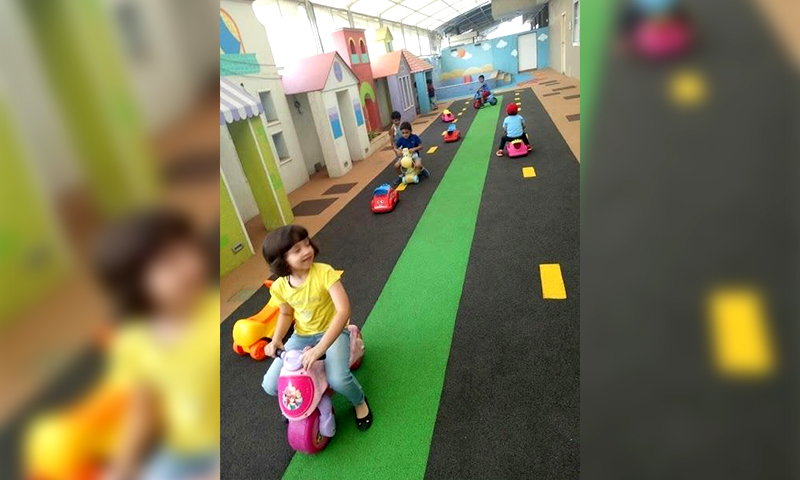
PROPORTION– A very wide aspect it does not only refer to the agronomical aspect of a design. Ergonomic charts and references are available for everyone to follow and child-related item fabricators adhere to the same very strictly.
Proportion, in my design also refers to the ratio of design elements, color, form, furniture, play elements and everything that can prevent overstimulation.
It also refers to the special theme and mural art I use in my design. The proportion of how much theming to render, so that it teases and motivates a child without becoming a distraction.
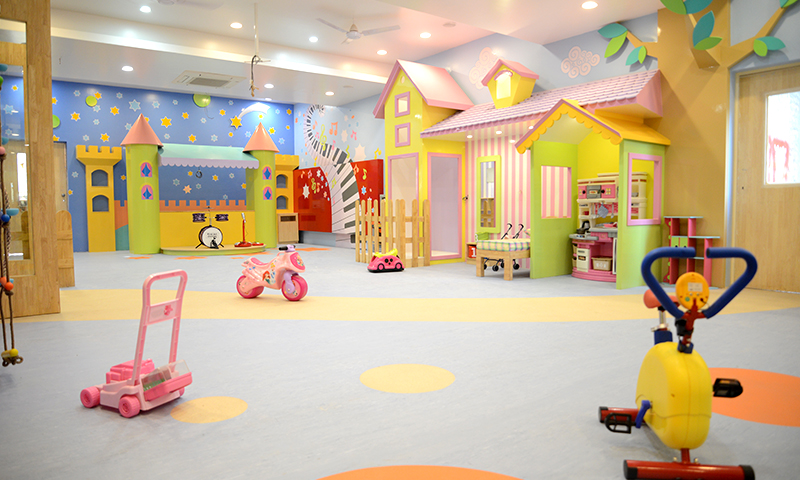
PALETTE – Psychological effects of color on our mind is undeniable. It affects children even deeper in the growing up years. Children become one of the colors in the palette I selected for the space I am designing. Natural light plays a very important role in defining the exact tonal value of the pigments to be applied.
Factors like the geographical location, weather patterns, and socioeconomic background defines the way children would respond to colors. If a particular shade of yellow is considered a happy color in a cold western country, it might cause overstimulation and irritability to a child in a warm part of India. Going deeper into this, one realizes that the intensity of the pigment and the tone of yellow used is equally important.
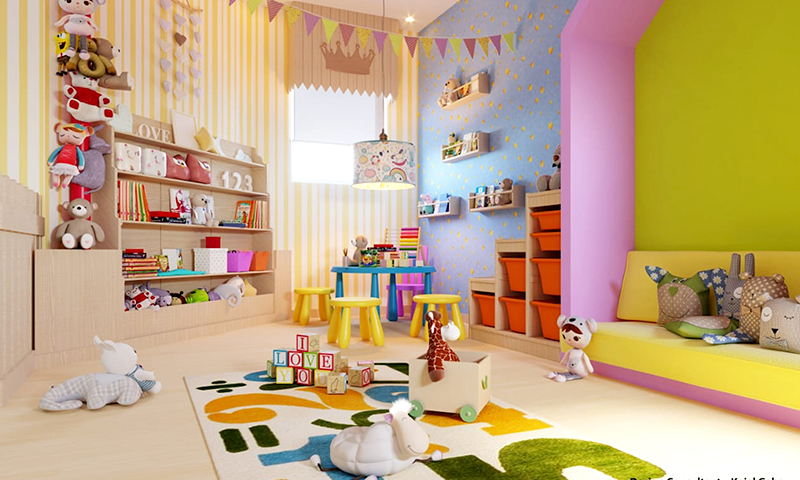
PSYCHOLOGY – The idea that the children are passive creatures and their minds can be compared with a blank CD is not accepted anymore. Now, it is believed that children have been somewhat programmed at the birth time to participate actively in their experiences of life.
To achieve this balance of engagement, the environment is critical to offer opportunities to think, construct and create for children. They interact with the environment around them and the reaction, positive or negative is a result of the psychological stimulation.
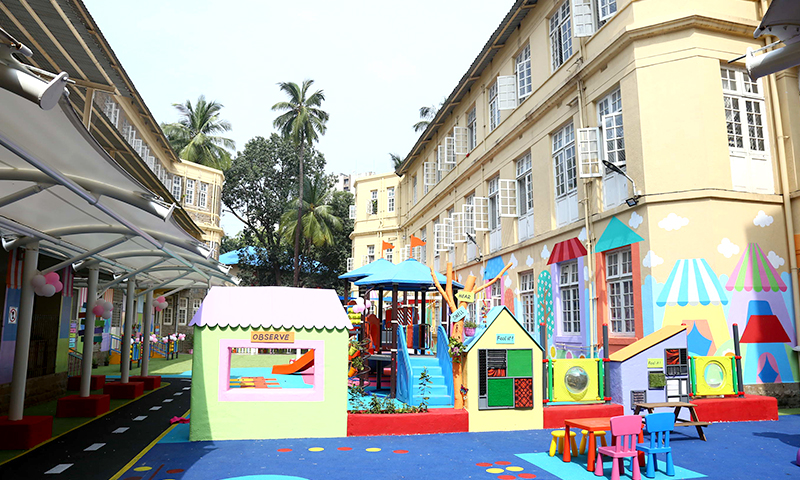
I have seen miraculously positive results in my experience of rendering customized designing for hospital therapeutic spaces like pediatric wards, physiotherapy areas, occupational therapy, multi-sensory zones for children with developmental challenges. Similarly, environmental psychology plays a vital role in enhancing the cognitive and sensory perception of children in ideally designed learning environments.
Designing for children is a science in itself and because it is so customized, it can sometimes defy all rules of stereotype design and aesthetics. The ability to be able to think, visualize and feel the impact of the design being created, from a child’s perspective takes years of training one’s heart and mind.
I look forward to enabling educational environments getting its due importance in the coming years. It will not only help the children in their developmental processes but also help facilitators and school management in achieving effective implementations and results of their learning programs.




